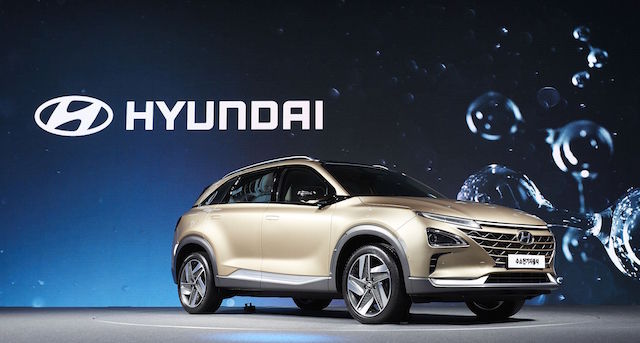
Research in Australia could result in the country supplying sustainable fuel-cell energy for ‘green’ cars throughout the Asia-Pacific.
The Canberra-based Commonwealth Scientific and Industrial Research Organisation (CSIRO) has developed a membrane reactor to turn liquid ammonia into pure hydrogen.
A CSIRO scientist said the process is the “missing link” in the drive for sustainable energy. It will fuel hydrogen-powered cars from Toyota and Hyundai in a world-first trial in Australia next year.
Using electrolysis, electricity generated from sunlight can spilt water into hydrogen and oxygen. The hydrogen can then be combined with nitrogen to form liquid ammonia.
Liquid ammonia is already being transported worldwide. The CSIRO’s modular membrane will allow it to be reconverted back to hydrogen at the point of use.
Dr David Harris, research director of low emissions technology at the CSIRO, said: “Hydrogen is a method of storing solar energy and the ammonia gives us a way to transport it.
“You have a mechanism to transport solar energy all over the world using existing infrastructure – ships, ports and railways.”
Brett Cooper, a director of Sydney-based company RenewableHydrogen Pty Ltd, said the CSIRO’s technology would one day mean a potentially carbon-free export industry for Australia that could match the scale of the current liquefied natural (LNG) gas industry.
“With this technology, we can now deliver our renewable energy to Japan, South Korea, and across the Asia-Pacific region in liquid form, as renewable ammonia, and efficiently convert it back to pure hydrogen for cars, buses, power generation and industrial processes,” he said.
“It will be the first time in the world that hydrogen that has come via the ammonia pathway into fuel cell vehicles.”

Hydrogen gas stored in tanks under the car flows to the fuel cell, which is made up of hundreds of thin metal membranes. The fuel cell and its membranes is a reactor of sorts, using oxygen to form water and electricity.
The process sends electricity to a battery that powers an electric motor that drives the wheels. The water leaves the car as clean waste.
Both Toyota and Hyundai already have hydrogen-powered vehicles for research in Australia. They will be joined next year by a new Hyundai, an unnamed SUV just unveiled in Seoul. Company executives believe fuel cell technology is the ultimate green car.
More than 20 right-hand-drive examples of the new SUV will be used in the trial. Hyundai says the semi-autonomous SUV uses an electric motor and battery with a range of up 800km.
Dr Sae Hoon Kim, head of Hyundai’s fuel cell research division, said the new car will meet motorists’ requirements once refuelling infrastructure is widespread.
“Technically we are ready, now we only need political decisions or social decisions,” Dr Kim said. “The world is going for renewable [energy], and renewable is abundant, especially in Australia. If renewable becomes the main energy in Australia, the most probable way is in hydrogen form.”

